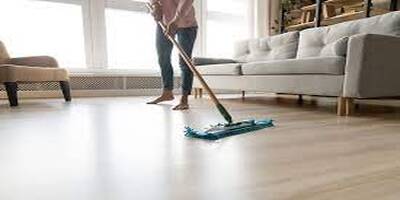Introduction
When it comes to ensuring the safety of residents, customers, or employees, preventing slip and fall accidents is paramount. Slippery floors can pose significant risks, especially in high-traffic areas or places where liquids are frequently spilled. However, with the right floor maintenance strategies in place, you can greatly reduce the chances of such accidents occurring.
The Impact of Slip and Fall Accidents
Slip and fall accidents can result in severe injuries, ranging from minor bruises to fractures and head trauma. In some cases, they can even lead to long-term disability. Beyond the human cost, these accidents can have legal and financial implications for businesses and property owners. This highlights the need for comprehensive floor maintenance to ensure the safety and well-being of everyone who enters a space.
The Role of Floor Maintenance
Effective floor maintenance involves a combination of preventive measures and proactive care. It starts with the careful selection of flooring materials that offer adequate traction and durability. Regular cleaning, inspection, and maintenance routines are essential to identify and address potential hazards before they escalate.
Choosing the Right Flooring Materials
The foundation of slip and fall prevention lies in selecting appropriate flooring materials. Different settings require different types of flooring – for instance, tiles with textured surfaces are ideal for areas prone to water exposure. In healthcare facilities, non-slip vinyl flooring can offer both safety and hygiene.
Regular Cleaning and Inspection Protocols
Regular cleaning is the cornerstone of floor maintenance. High-traffic areas demand daily cleaning routines, while others might require less frequent attention. Inspection should accompany cleaning to identify any damages, uneven surfaces, or spillages that could compromise safety.
Slip-Resistant Coatings and Mats
To enhance traction on existing floors, slip-resistant coatings and mats can be employed. These additions provide an extra layer of safety, particularly in places where replacing the flooring is not feasible. Applying these coatings requires professional expertise to ensure their effectiveness.
Adequate Signage and Communication
Clear and concise signage plays a crucial role in preventing slip and fall accidents. “Caution: Wet Floor” signs alert individuals to potential hazards, encouraging them to exercise caution. Effective communication also involves promptly addressing spills and cleaning up wet areas.
Employee Training and Awareness
In commercial settings, employee training is essential for maintaining safe floors. Training should cover spill cleanup procedures, proper usage of cleaning agents, and recognizing potential hazards. When employees are well-informed, they can actively contribute to maintaining a secure environment.
Residential Floor Maintenance Tips
Safety at home starts with keeping floors clean and clutter-free. Use area rugs with non-slip backings and promptly clean up spills. Regularly inspect the floor for loose tiles or damaged areas and address them promptly.
Commercial Floor Maintenance Tips
Commercial spaces demand higher maintenance efforts due to increased foot traffic. Implement strict cleaning schedules and invest in quality cleaning equipment. Consider using entrance mats to minimize dirt and moisture accumulation.
Outdoor Flooring Considerations
Outdoor spaces are not exempt from slip and fall risks. Choose outdoor flooring with texture and durability, and establish regular cleaning routines. Ensure proper drainage to prevent water accumulation.
Flooring Maintenance in Healthcare Facilities
Healthcare settings require special attention to hygiene and safety. Opt for flooring materials that are easy to clean and disinfect. Regularly sanitize floors and ensure spillages are promptly managed.
Educational Institutions and Floor Safety
Schools and universities should prioritize floor safety to protect students and staff. Regular maintenance, combined with educating students about the importance of avoiding horseplay and being cautious, can significantly reduce accidents.
Ensuring Floor Safety in Retail Spaces
Retailers need to maintain a safe shopping environment. This includes promptly attending to spills, using slip-resistant mats, and training employees to be vigilant about floor safety.
Conclusion
Prioritizing floor maintenance is a critical step toward preventing slip and fall accidents. By selecting appropriate flooring materials, implementing regular cleaning and inspection routines, and fostering employee awareness, you can create safe environments for everyone. Remember, safe floors are not only a legal requirement but also a reflection of your commitment to the well-being of those who enter your space.
FAQs
How often should I clean and inspect floors to prevent slip and fall accidents?
Regular daily cleaning and inspections in high-traffic areas are recommended, while less frequented areas can be inspected less often.
Are there any natural remedies to improve floor traction?
Yes, substances like vinegar or even sand can be used to improve traction temporarily. However, professional solutions are more effective and long-lasting.
Can I apply slip-resistant coatings myself?
It’s best to hire professionals for applying slip-resistant coatings, as proper application is crucial for their effectiveness.
What should I do if I encounter a slippery floor in a public place?
Proceed with caution, take small steps, and avoid sudden movements. Notify the management so they can address the issue promptly.
Is there a correlation between floor maintenance and brand perception?
Absolutely, well-maintained and safe floors not only prevent accidents but also positively contribute to your brand’s reputation for caring about customer or visitor safety.

